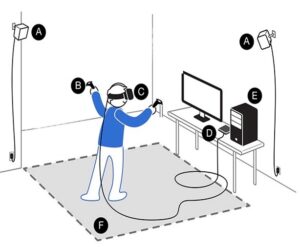
The effect of architectural space geometry on human emotions
The search for the right way to design architectural spaces is one of architecture's most enduring and fundamental questions. In their aspiration to improve the built environment, architects continuously try to create spaces that positively affect users. Recent technological advances in architectural design and simulation methods allow architects to empirically examine and optimize numerous criteria that affect users. These criteria are primarily related to environmental aspects such as light, temperature, and acoustics. However, perceptual and cognitive criteria, which are crucial to understanding the influence of architectural space on people, are still evaluated by relying on the designer's experience or rules of thumb.
Throughout the last century, studies in psychology, behavioral sciences, and architecture have tried to define and explain the emotional impact space has on a person. These studies show, mainly via qualitative research methods, that different spaces evoke different emotions, yet it is still impossible to tell precisely how architecture induces them.

The research suggests a new positivist approach to examining the connection between human feelings and architectural space. It attempts to demonstrate that emotional reactions generated by various architectural spaces can be empirically measured and quantified by employing new virtual reality techniques, physiological sensors such as EEG and GSR, and data analysis methods. It thus aspires to add a new dimension to how architectural space is being designed and evaluated, which relates to human feelings.
Scientific papers that were published on this research:
Shemesh, A. Leisman, G. Bar, M. Grobman, Y.J. A neurocognitive study of the emotional impact of geometrical criteria of architectural space. Architectural Science Review. Vol. 64. June 2021. DOI: 10.1080/00038628.2021.1940827.
Shemesh, A. Leisman, G. Bar, M. Grobman, Y.J. The Emotional Influence of Different Geometries in Virtual Spaces: A Neurocognitive Examination. Journal of Environmental Psychology. March 2022. DOI: 10.1016/j.jenvp.2022.101802
Shemesh, A. Leisman, G. Talmon, R. Bar, M. Grobman, Y.J. "The process of space perception: How do we perceive architecture?". Movement 2019: Brain, Body Cognition". Eds. Merrick, J. Leisman, G. Nova Scientific Pres. New York. USA. Pp385-386. 2019.
Shemesh, A. Bar, M. Grobman, Y.J. Space and Human Perception – Exploring Our Reaction to Different Geometries of Spaces. In Y. Ikeda, C. M. Herr, D. Holzer, S. Kaijima, M. J. Kim. M, A, Schnabel (eds.), Emerging Experience in Past, Present and Future of Digital Architecture, Proceedings of the 20th International Conference of the Association for Computer-Aided Architectural Design Research in Asia CAADRIA 2015, 8-23 May 2015, Kyungpook National University, Daegu, Korea. Pp. 541–550. (Fully refereed abstract and paper). 2015



